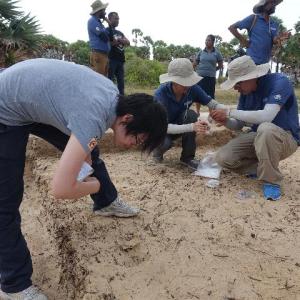Shanghai Museum has signed a memorandum of understanding (MOU) with the Sri Lanka Central Cultural Fund on a five-year archaeological cooperation program.
Yang Zhigang, the curator of the Shanghai Museum, said on Wednesday that the MOU was a comprehensive cultural exchange program ranging from joint excavation, relic protection and museum exhibition to educational cooperation.
The MOU was signed after the museum’s archaeological team went to Sri Lanka to join a 40-day site excavation at the ruins of Allaippidy in the port city of Jaffna in August.
The archaeologists found some porcelain fragments dating back to the Northern Song Dynasty (960-1127), which were transported from China.
“Sri Lanka is an important stop on the Maritime Silk Road. Chinese explorer Zheng He (1372-1433) visited Sri Lanka in 1405 for the first time,” Yang said, explaining why the museum made Sri Lanka the first station in its overseas joint archaeological research on the Maritime Silk Road.
Zheng He, an admiral during the Ming Dynasty, led maritime expeditions to Southeast Asia, India, and Africa in the 14th century.
Yang said Zheng He is the key figure for Shanghai Museum’s overseas archeological excavation. A stone tablet exhibited in the National Museum of Sri Lanka was proved to be left by Zheng He. Archaeologists from the museum hoped to find more evidence of Zheng He’s fleet to Sri Lanka.
Yang said that the joint excavation in Jaffna will focus on the trade route and mode study of the Maritime Silk Road. “The two sides will hold joint exhibitions on archeological findings and publish research papers in both Chinese and English,” said the curator.
Courtesy: ASIA PACIFIC DAILY


